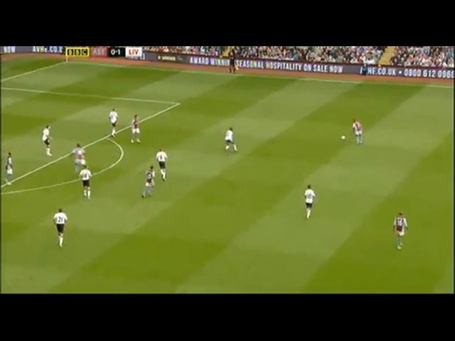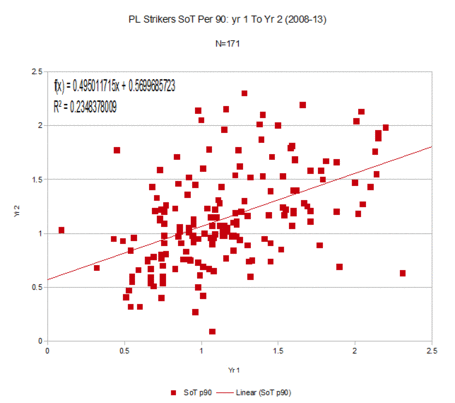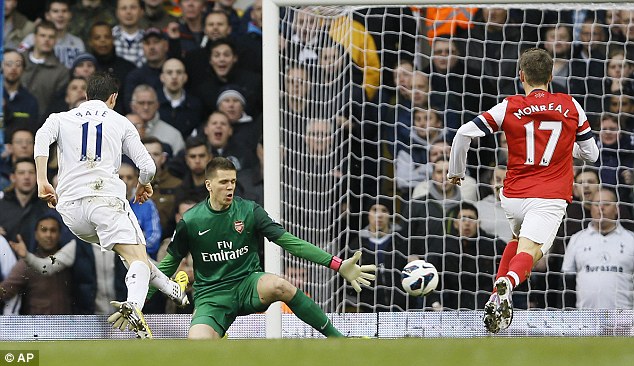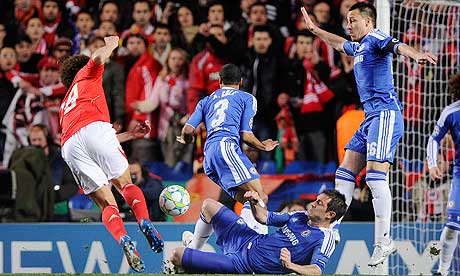"The ambition that Stan Kroenke, Arsene Wenger, the players, our staff and I know all of the fans have is to be competing to win the Premier League and Champions League,” said Gazidis. “If we are at that level, the trophies will come.*
"Arsene is not scared to spend money, but he has to believe he is getting a top class player. We’re making a list of those now, and if the price is right, we will buy them."
“And to help Arsene close these deals, we’ve brought in David Maguire. Arsene has been missing someone to help him in the transfer market since David Dein left, and we feel adding this position was important to help us improve the squad. David worked as a player agent in the United States for the past 20 years, but we feel incredibly confident in his ability to operate on the other side of the fence, and bring in the players Arsene thinks are top, top quality.”
Cut to an office inside the Arsenal complex at Ashburton Grove. You see an ageless man, with a wicked, world-eating grin. He is dialing the phone. His voice sounds remarkably like Tom Cruise.
“Yo, Gonzo! This is David Maguire from Arsenal.”
“Arsenal?”

“Yes, Arsenal. Look man… we building a juggernaut here at Arsenal this season. We have a huge stadium, a manager who plays great attacking football, and we now have the financial firepower to compete with anyone in Europe.”
“Arsenal?”
“Yes, Arsenal. Gonzo, baby, I think you are one of the most underrated forwards in Europe. Did you know over the last five years at Real Madrid, you have the best conversion percentage of any player in Europe except Lionel Messi? And that your per90 goalscoring rate in La Liga is .89?!? Robin van Persie’s is only .72, and he’s the best scorer in our league! Add in your assists and you contribute nearly 1.2 goals per 90 minutes on the pitch.
Anyway, I’m calling you because I think you can be our secret weapon. Real Madrid doesn’t understand you. The fans there don’t love you the way that you should be loved.
You.
Are.
Great.
So Gonzo… I want you to come to Arsenal. Come play for us in London. Come be our big man up front. Come help us win Premier League titles and the Champions’ League. Can you do that for me?”
“Arsenal!”
“Outstanding. Let me call Florentino and we’ll get this sorted out, pronto.”
Cut to a luxury hotel in Madrid. Gonzalo Higuain has agreed to come on board, his father has sorted out all the contract details, and now Jerry, er… David Maguire is in Madrid to sign the final transfer papers.
“Florentino! How are you? Looking good, I gotta say. I know you are a busy man, so let’s get these papers signed and I’ll let you get back to all the other business I know you need to do this summer.”
“Senor Maguire, welcome. I feel I must inform you that there has been a… change of plans, since last we spoke.”
“Oh? I hope Gonzalo hasn’t been injured or anything. Your people said everything is in order, which is why I’m here.”
“Yes well… we feel that £24 million isn’t the correct price for Mr. Higuain. We feel… £32.5 million is more representative of his value.”
“£32.5 million? You’re joking right? That’s a good one, Florentino.”
“It is no joke, Senor Maguire. That is the new figure.”
“Are you fucking kidding me? We had a deal. I’m here because we agreed to a fee before I ever got on a plane. And now you change it? What sort of operation is this?”
“I am sorry, senor Maguire. You must know, your club is not the only one that is interested in buying Higuain. Given his obvious talent and the fact that he is only 25,” Perez shrugged, “we feel £32.5 million is correct.”
Maguire turns away from Perez and starts to pace around the room. He stops for a moment, turns and says, “You know what? I have cash, Florentino. A giant stack of it. In fact, we have more cash than any other team in Europe. So I tell you what we’ll do. We will pay you £28 million in cash, right now. Right here, in fact, because I brought it with me in a big fucking suitcase.” Maguire slams his fist on the table. “ And I’ll give you an extra £4 million in add-on clauses if we win things. That will GET you your £32 million.
BUT… for that price, I want first option on Morata. If you want to sell him, you call me first, you got it? £28 million cash, £4 million add-ons, and first shot at Morata, or I walk and don’t come back.”
“That, senor Maguire… should be acceptable.”
“Good, sign the papers and I’ll get out of here. I’ve got a ton of business left to do.”
The details are filled in and the deal is signed by both parties. Arsenal now own Gonzalo Higuain.
“Oh, and Florentino…” Maguire bends over Mr. Perez and makes a loud sniffing sound. “You stink.”
End Scene.
Cut to Maguire striding through the airport. He is again on his phone.
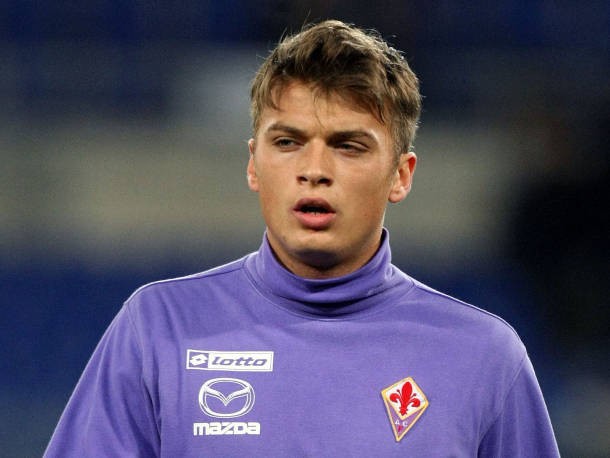
“Adem! How are you? This is David Maguire from Arsenal.”
“Who? How did you get this number?”
“Adem, I just signed Gonzo Higuain. Higgy is coming to Arsenal to play for us, and I want you to play for us too. Look man, I know it’s the last year of your contract at Fiorentina, and we feel like you’d be much better off playing for us in London.”
“London? I like Italy. Italy is warm. There are beautiful women here. And the sun shines more than twice a week. Did I mention it is warm? I have my heart set on Milan.”
“Milan?!? You know Milan is owned by Berlusconi, right? The same guy who was recently convicted and sentenced to jail? The same guy who has stopped spending heaping amounts of money on his football team that you want to join? And honestly, have you seen the San Siro? It’s a cesspool! A relic of an ancient time, and honestly, so is Milan’s football team.
Anyway, London has gorgeous women too. We also have a world class manager, we’re building a Champions’ League winning team, and do you hear that beeping sound where you are at?”
“Beeping? What? No, I…”
“That beeping sound is a giant truck full of money, preparing to dump the contract I’m ready to offer you at your feet. The Premier League is the richest league in the world, and we’re going to win that league this year, but I need your help. We need what you bring to the football pitch. That balance. That amazing vision. You are destined for greatness, Adem, but you need to be somewhere that can help make that happen. That place is in London.
No one else can offer you what we will offer you. Come play for Arsenal.”
“Uh… okay?”
“Awesome. I’m getting on the plane now. I’ll meet you in Florence in about an hour.”
End scene.
And thus, after a short consultation with Fiorentina management, who agree to a £10M deal, Arsenal sign their second player of the summer, Fiorentina’s Adem Ljajic, aged 21. In one swoop, they have already filled their holes at center forward and left wide forward with world class players. But Maguire wasn’t done yet…
Cut to a golf course near Lyon. You see Maguire striding across the course toward a well-dressed foursome who are speaking in French. Maguire flashes that huge, toothy smile.
“Monsieur Aulas! Great to meet you, my name is David Maguire.”
“Pardon?”
“You are Jean-Michel Aulas, owner of Olympique Lyonnais football club, are you not? I work for Arsenal. You’re probably more familiar with our manager, Arsene Wenger. Anyway, they hired me to work on their transfer dealings this summer.”
“Oui…?”

“I apologize, I thought someone would have called you about this already. I’m here about Maxime Gonalons.” Aulas raises an eyebrow. “Pick a number.”
“I’m sorry, I don’t understand.”
“Arsenal would like to buy Gonalons for this season. I’m not going to beat around the bush… he’s one of the best defensive midfielders in the world. Still only 24, he completed 88% of his passes last year, averaged a combined 7 tackles and interceptions a game, never gets dispossessed, and pings accurate longballs around the park like they are going out of style. He is our captain of the future.”
“Ah, but he is our captain right now.”
“And Arsenal are willing to compensate you handsomely for that. So pick a fair number that you will sell him at and we’ll make this happen.”
“Hrm… £25M.”
“Call your assistant, have her put it in writing, and you have a deal. I’ll go wait in the club house for you to finish your round, and then we’ll go sign the thing. Oh, and you’re pulling your head a bit when you drive by ball watching. Keep it down just a little longer and you’ll cut that slice.”
End scene.
Cut to The Emirates stadium, filled with a shocking amount of screaming fans who are excited to be there at the unveiling of Arsenal’s trio of world class players. The fans were energized, and so were the players on the squad. Hope for something beyond the perennial "qualify for the Champions' League" grind had finally arrived.
For £32M + £25M + £10M = £67M, Arsenal filled nearly every major hole in their roster with highly talented, highly technical, world class players. They would still need to upgrade at goalkeeper, and potentially sort out their right back issue, but with three quick signings, Arsenal had transformed themselves from perennial fourth place finishers into one of the best teams in the Premier League and Europe.
The End
[*Note: The actual quote from Ivan Gazidis ends with the first paragraph. The rest was a work of fiction.]
That, dear readers, is how Arsenal’s summer should have gone.
It seemed like such a simple task. Take the stack of cash collected from the hard-earned wages of fans, be decisive in pursuing the players you really want, and go buy them. For once in your lives! How hard could it possibly be to add a few world class bodies to great players like Walcott, Cazorla, Wilshere, Arteta, Gibbs, and Koscielny who are already on the team?
Instead, this is how Arsenal’s transfers have gone so far.
…
…
…
Originally, I considered leading off our previews with Arsenal, but I wanted to give the club a little more time to finalize some transfers. 12 days later and not a damned thing has happened. This isn’t a club in managerial transition like Manchester United – Arsenal have the longest serving manager in the Premier League. They also have a cash reserve that nearly matches the total cash of every other team in the league, COMBINED. [Swiss Ramble]
The money is there. Gazidis said in public that they would spend this year. Yet we’re one day before the start of the season, and in typical Arsene Wenger fashion, the only player purchased so far is an injury-prone 20-year-old from France. He might even be good! At this point, nobody cares.
Don’t believe for one second the Wenger rhetoric that there aren’t many players out there that could improve the squad. Arsenal aren’t that good any more. Cesc Fabregas and Robin van Persie walked out the door some time ago. So did Nasri, Clichy, Henry, Adebayor, Toure, and any number of others. The vast majority of them have already won titles with different teams.
The list of players Arsenal could buy that would make them better immediately is long, wide, and deep. And creating that list isn’t nearly as hard as Wenger always makes it out to be. I know because I’ve done it myself (link).
By not buying players before now, Arsenal have made a ton of mistakes you’d think they’d have learned in years past. Like oh, say… the desperate transfer buying fiasco of 2011! The final day of that transfer window saw Arsenal add the mighty Park Chu Young and Andre Santos to the squad. And never play them. You would think the club would go out of their way to avoid that sort of thing, and yet here we are…
1) A number of the best targets will already be off the market, either because they signed new deals at their home clubs, or because someone beat Arsenal to the punch.
2) Any players bought will miss the entirety of preseason and take a while to get used to the system and playing with their new teammates. This means potential points lost at the start of the season, and this year especially, every point counts.
3) Selling clubs know Arsenal will be running out of time and getting desperate. Therefore they have a chance to raise their prices a little extra, even if they are interested in making a deal. *Cue Wenger gnashing his teeth*
4) Most of the best teams (i.e. the ones that have players good enough for Wenger to want to buy) will be unwilling to sell players because they won’t have enough time to adequately replace them.
5) The atmosphere at The Emirates will be fucking toxic. Combine 60 thousand parts fans who are already sick of paying the highest ticket prices on the planet, one part CEO who told fans at the beginning of the summer they would spend, one part 8-year trophy drought, add one part crochety old, yet-totally-empowered manager who legitimately seems to have lost the plot when it comes to understanding the transfer market and you have a recipe for negative home field advantage. Seriously, they would be better playing on the road. The players don’t deserve this, but they are going to have to put up with it. Again.
If I owned an Arsenal season ticket, I would be apoplectic (translation: losing my shit). How did this happen, again? How did I get sucked in and let them lie to me, again?!?
We’re 2000 words into this silly preview, so I guess it’s time I stopped ranting/telling tall tales and review the actual team.
2012-13 League Finish: 4th
Notable Cup Finishes: CL Round of 16, Losing to Bradford and Birmingham in domestic cups
Goal Difference Rank: 3rd
Shot Dominance Rank: 4th
PDO Rank: 3rd
Note: I explain what the metrics mean and why you might care in the metrics appendix at the bottom.
The good news for Arsenal last year was that they once again qualified for the Champions’ League, and once again a) said goal was seemingly impossible at one point in the season and b) it came at the expense of Tottenham. They also solidified the defense, dropping the goals against figure for the year from a whopping 49 in 11/12 to very respectable 37 last year. Theo Walcott also signed a new long-term contract (note to doubters: his stats say he’s (finally) really good and he's only 24), as did Arsenal’s core of British players. Long-term contracts for unplayables like Sebastien Squillaci and disappointments like Andrei Arshavin came to an end, freeing up salary money to be used on useful new members of the squad.
On the bad side, Robin van Persie left the club for Manchester United, and immediately lead them to yet another league title. Additionally, defensive solidity seemed to come at the cost of offensive output, with goals scored falling from 79 to 72, and shots per game falling to only 15.7, Arsenal’s lowest figure in (at least) the last four seasons and nearly two shots a game less than four years ago. The talent drain had finally started to show.
Shooting Locations

Arsenal’s shooting locations are good, with 69% of their shots coming from prime and secondary positions. However, it could be considerably better. Arsenal took nearly ten percent more shots from marginal positions than Manchester United. If you look at the map above, there are simply too many pot shots from 25 yards plus, with Cazorla and Ramsey two of the prime offenders. A slight adjustment in acceptable shooting locations could yield significant dividends in the future.
It’s not in the image, but defensively, Arsenal also conceded 69% from prime and secondary positions, but that’s pretty good for a couple of reasons. First, they only gave up 10.6 shots against per game, and second, the difference between that percentage and the best in the league (Stoke), is only 6%. All Arsenal need to do defensively is cut down on errors leading to goal scoring chances, and they will be outstanding.
Transfers
I covered the lack of incoming activity above, but Arsenal deserve credit for shifting just about every piece of perceived dead weight bar Bendtner to other clubs. In addition to the expirings, Denilson, Chamakh, Gervinho, Mannone, and Santos are out the door. Djourou was shipped to Hamburg on another loan deal, and Coquelin to Freiburg.
In fact, Arsenal are running a net positive transfer balance for something like the 7th year in a row. Is it any wonder the talent cupboard is bare?
And still… there are no signings. The Premier League starts tomorrow. Champions League Qualifiers start midweek.
Every Arsenal blogger I follow is utterly baffled. So am I. What the hell is going on?
Shopping with Arsene Wenger must be a lot like taking your grandmother to the movies. You think you are doing a nice thing, and getting her out to some film she wants to see, like The King's Speech. Then you get there, she sees the prices, and grandma goes crazy.
"I won't pay that to see a movie," she says. "That's outrageous."
"But grandma," you explain. "That's just what movies cost these days. Don't worry about it... I'm happy to pay for you too."
"No, I refuse to go into that theater on principle. I just won't do it." So despite the fact that you already traveled 25 minutes to get there and now have to travel 25 minutes back home, you don't see the movie.
That's Arsene Wenger when it comes to buying players. Regardless of how much of other people's money is in the bank, he has permanent sticker shock. He only wants world class players, but is morally opposed to stumping for them.
Conclusion
Arsenal were pretty good last year. They have some youngsters who are entering their prime, the defense was actually stout, and there’s hope that Olivier Giroud will improve in his second year in the league.
The problem for Arsenal comes when you compare them to the other good teams in the league. Chelsea? Better. Manchester City? Better. Spurs? Better. Liverpool? Better. Manchester United? Worse? Maybe?
You cannot stand still this year and expect to qualify for the Champions’ League. And honestly, with an enormous reserve of cash, new commercial deals kicking into force this year and next, a squad that has been drained of talent time and again, and an 8-year trophy drought, why would you want to? Somehow, that is what Arsenal have done. The league is more wide open than it has been in decades, but Arsenal clearly are not going for it. No one, outside of Arsene Wenger, can tell you why not.
My occupation is assessing football teams for fun and profit. Objectively, I now have five teams in the league ahead of them in terms of playing style, quality, and depth of talent. Their expected season points total in the gambling markets has dropped six points since the numbers were posted at the start of July. Arsenal already had to make a ridiculously improbable run the last two seasons to stay in the Champions’ League, and that sort of thing simply can’t happen every year.
4th place once again? Not unless they sign some very good players before the window closes. Even if Spurs sell Gareth Bale, I just can’t see it.
Metrics Appendix
Shot Dominance is a measure of how many shots a team concedes versus how many they take themselves. This measure is useful in predicting where teams will end up in the table at the end of the season. It’s not perfect, but it is useful. It falls down a bit when faced with unique offensive systems like at Barcelona and Manchester United under Alex Ferguson, where they take fewer shots overall than you expect from great teams, but the chances they create are significantly more likely to score.
PDO is a measure of how well a team converts shots on the offensive end and saves shots on the defensive end. Good teams tend to post high levels of PDO and bad teams low levels over time, but there is a huge regression to the mean with this measure as well. Thus analysts tend to look at extremes of PDO as “luck factors.”









